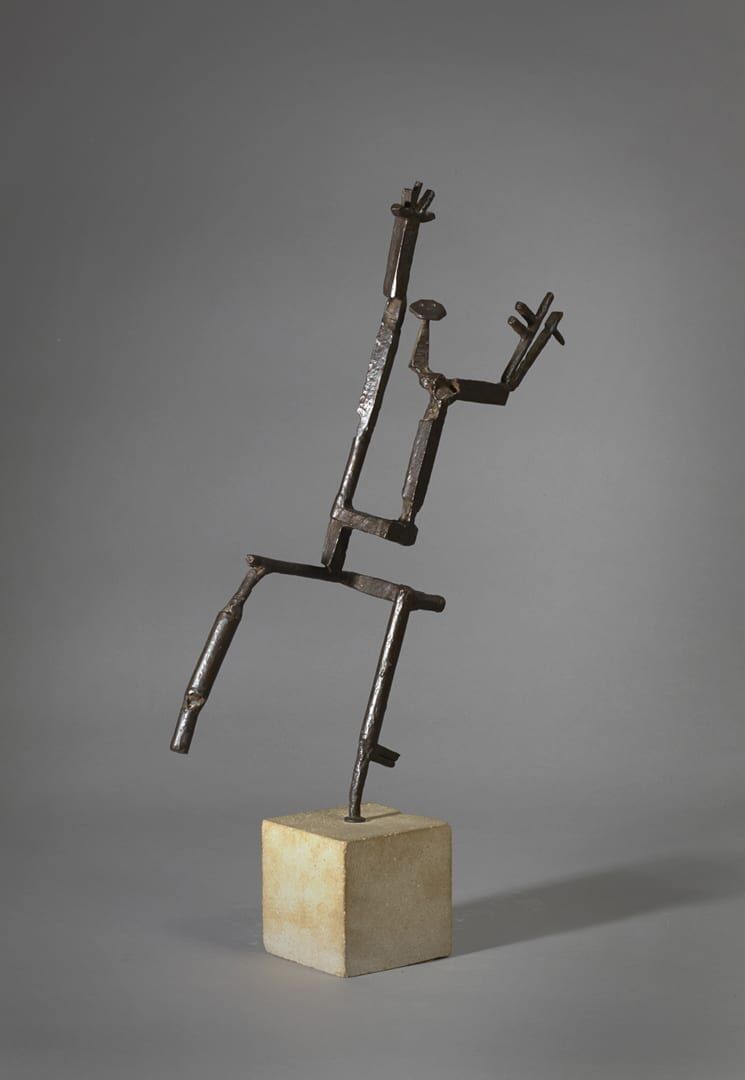DANSEUSE À LA MARGUERITE
1937
Médium: Fer, forgé, soudé
Dimensions: 46 x 28,8 x 9,5 cm
Danseuse à la marguerite is a fanciful work by Julio González, created in iron in 1937.
Here, González fashions forged and soldered iron rods and screws into a graceful, linear figure, leaping with her arms raised, and holding a daisy high over her head. The bodily forms are simplified and abstracted to the point that the daisy is difficult to distinguish from the figure’s hands, as though the dancer was transforming into a flower. The theme of metamorphosis, here from metallic to human to vegetal forms, is common in Gonzalez’s work at that time.
The dancer is a frequent motif in González’s work, which allows him to capture the essence of movement, dynamism and joy. This work was created in the midst of the Spanish Civil War, a conflict that ravaged González’s native country, and deeply impacted him personally and artistically. Danseuse à la marguerite is a symbol of hope, and a plea for life, in the face of the tragedy of war.
In 1964, Roberta González donated a bronze cast of this work to the Musée national d’art moderne, which is today housed at the MAMC+ Saint Etienne .
à decouvrir aussi :

ETUDE POUR PETIT MASQUE À L’OEIL CARRÉ
- mine de plomb, collage, dessin découpé
Découvrir l'œuvre...

LA PETITE FAUCILLE
1937 - Bronze, forgé
Découvrir l'œuvre...

ETUDES DE VISAGES DOULOUREUX
1938 - plume, encre de chine, crayon noir sur papier blanc (feuille de cahier de dessin)
Découvrir l'œuvre...



